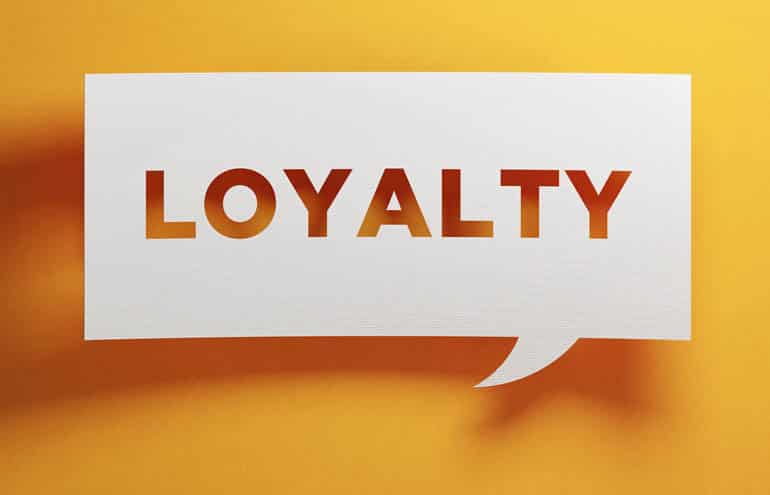Turning satisfied clients into loyal clients will make your practice more profitable and more enjoyable.
Recently, Delta Air Lines quietly announced a change to the boarding process. In the past, someone with Diamond status (125,000 annual miles plus a minimum spend on flights the previous year) was allowed to board at the same time as passengers seated in first class. Now, Diamonds are invited to board after first class.
As someone with more than 3 million miles on Delta, I am terribly loyal. But this small change made me take note. Will it change my flying experience? Probably not one iota. I get upgraded a lot anyway, and I’m sure there will still be plenty of overhead space even if I’m not.
I’m actually more puzzled than annoyed. What message does this send to Delta’s most valuable customers? It doesn’t make sense to value a potentially one-time buyer of a ticket over someone who has amassed millions of miles and spent hundreds of thousands of dollars on Delta.
Value of Loyal Clients
Research consistently shows the value of loyal customers and clients. For example:
- They tell other people. In fact, that’s me. I tell people all the time, “I love Delta” — and I do.
- They are willing to pay more. I almost always fly Delta, even if it costs me more. I can trust Delta. Plus, as I said, I’m loyal.
- They are easier to work with. People who travel a lot overlook issues and sympathize with employees. I understand they don’t cause weather delays or mechanical problems.
The same traits are true for loyal law firm clients: They are great promoters, they haggle less on fees and are willing to use higher-value services, and they make your lives easier because you know how to work together.
Making Clients Loyal: A Few Ideas
A lot of people in our industry talk about the goal of achieving client satisfaction. But the bar should not be satisfaction; it should be loyalty.
What are you doing to cultivate, recognize and reward loyal clients? Here are just a few ideas.
Offer concierge-level services.
All clients are not created equal. Identify your most valuable clients — year in, year out, or greatest fees or best referral sources — and give them more attention and greater access to you.
Recognize them.
Organize appreciation events, send handwritten thank-you notes or give them a bottle of fine wine or customized gifts that show you know their interests.
Organize around them.
Set up internal teams. Teach everyone on the team about the client’s quirks and guidelines, business and industry. Make assignments for contact and relationship development. Develop an annual plan outlining what you will do for the client in the coming year. Set up regular meetings with the team and the client.
Offer value adds.
Think of extras you can offer, such as webinars, training, interns, secondments or personal assistance (e.g., a home closing).
Communicate with them.
Set up post-matter evaluations, conduct an annual client feedback survey or schedule an annual review and planning meeting. Tailor your communications to the client, such as a company-specific webinar or personalized legal alerts. (Related: “The Client Relationship Meeting”)
Support them.
Contribute to their pro bono activities or charity projects. Send complimentary notes to their supervisors about their contributions to matters. Shine a light on them by nominating them for awards or recognition. Make referrals to their businesses or use their products and services.
Collaborate with them.
Write articles together, co-present at conferences or organize a joint pro bono or community service activity.
Bring them into the fold.
Involve clients in firm panels or retreats. Introduce them to people throughout your organization. Ask their opinions on new firm services, pricing arrangements or website changes.
Consider the Rule of Six When Investing in Client Loyalty
In the retail industry, they have the “rule of six.” When customers have a greater emotional engagement, bond and loyalty with a brand, it makes them six times more likely to behave better toward the brand. They’re six times more likely to buy from you; they’re more likely to buy different categories of products or services; and they’re six times more likely to give you the benefit of the doubt in uncertain circumstances.
Turning satisfied clients into loyal clients will make your practice more profitable and enjoyable. So, the next time you’re tempted to chase a prospect, take a few minutes to make an existing client loyal instead.

Here’s Your Guide to Law Firm Marketing
Whether you are new to marketing your law firm or need to build up your personal book of business, Attorney at Work Magazine has good ideas and commonsense advice from more than a dozen marketing pros — the best of AttorneyatWork.com — all designed to help your practice flourish and grow.
* Free subscription required.























